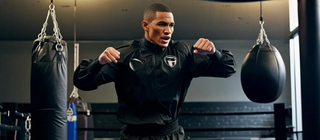Sambo: a sport between tradition and innovation
Sambo is a unique discipline in the martial arts landscape. It originated in the Soviet Union as a self-defense system and over the years became an internationally recognized sport. This article will explore Sambo’s origins, principles, and global impact, highlighting its importance both as a martial art and as a means of personal and physical development.
Introduction to Sambo
The term Sambo is an acronym for “Samozashchita Bez Oruzhiya,” meaning “self-defense without weapons.” This sport combines wrestling and throwing techniques, joint locks, and strikes, resulting in a versatile and effective style. While it shares some similarities with martial arts such as judo or freestyle wrestling, Sambo stands out due to its unique approach and emphasis on speed and strategy.
History and Origins
Sambo emerged in the 1920s and 1930s in the former Soviet Union as a self-defense system for the military and law enforcement. The main developers of Sambo were Viktor Spiridonov, who created a gentler version suitable for rehabilitation, and Vasili Oshchepkov, a judo expert who integrated Japanese techniques into the new system. In 1938, Sambo was officially recognized as the Soviet national sport.
Main Styles of Sambo
There are three main variants of Sambo, each with specific features:
- Sport Sambo: Similar to judo, it focuses on throws, holds, and joint locks, aiming to score points or achieve submissions.
- Combat Sambo: Includes striking techniques such as punches, kicks, elbows, and knees, making it ideal for self-defense or competitions like MMA.
- Self-Defense Sambo: Designed for real-life scenarios, it combines practical techniques to neutralize both armed and unarmed attackers.
Rules and Competitions
Sport Sambo competitions take place on a circular mat, and fighters wear a special jacket called a sambovka, along with shorts and specific shoes. The scoring system rewards spectacular throws, dominant holds, and submissions. In Combat Sambo competitions, strikes are allowed, making the matches more dynamic and intense.
Key Techniques
Sambo is characterized by the effectiveness and variety of its techniques. Among the most iconic are:
- Throws: Derived from judo and wrestling, used to off-balance the opponent and bring them to the ground.
- Joint Locks: Employed to immobilize or force the opponent to submit.
- Control: Great emphasis on positioning and tactical dominance.
Sambo’s versatility makes it effective in both sporting competitions and self-defense situations.
Clothing and Equipment
Sambo also stands out for its distinctive attire. The sambovka, a durable yet flexible jacket, is designed to facilitate gripping. Sambo shoes provide support and traction without limiting mobility. This gear, paired with shorts, makes Sambo practical and unique compared to other martial arts.
Worldwide Spread
After the fall of the Soviet Union, Sambo spread across the globe. Today, it is practiced in Europe, Asia, Latin America, and even in the United States. Athletes like Khabib Nurmagomedov and Fedor Emelianenko have brought Sambo to international prominence, showcasing its potential in the MMA arena.
Benefits of Sambo
Practicing Sambo offers numerous benefits, including:
- Physical improvement: strength, endurance, and flexibility.
- Self-defense: practical techniques for real-life situations.
- Mental development: strategy, discipline, and emotional resilience.
Sambo is not just a sport—it’s a means of growing both physically and mentally.
Curiosities and Anecdotes
Sambo boasts many fascinating stories. For instance, some Soviet athletes used Sambo as a secret method to prepare for international judo tournaments. Moreover, Sambo has been featured in several Russian films, highlighting its cultural and sporting value.
Sambo Today
In recent years, Sambo has gained increasing international recognition. The FIAS (International Sambo Federation) works to promote the sport and gain Olympic recognition. Despite challenges, Sambo continues to grow, attracting practitioners of all ages and skill levels.
Conclusion
Sambo represents a perfect balance between tradition and innovation. With deep roots in Soviet history and a promising future, this sport offers a unique opportunity for physical, mental, and tactical development. Whether you’re a martial arts enthusiast or simply curious, Sambo is well worth discovering and appreciating.







